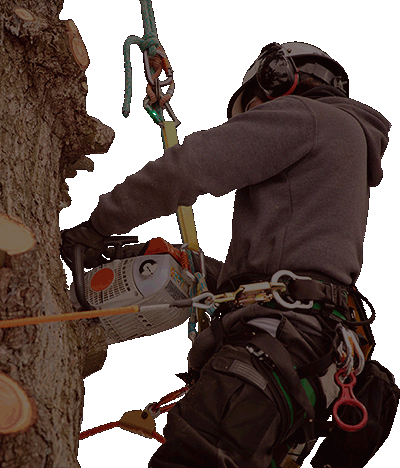
We’re weeks into the growing season, and our Spartanburg trees are happy to show off their fresh appearance: a full, blooming canopy, sprouting flowers and fruits and—wait, are those curling leaves?
Damage to Spartanburg tree leaves and stems is often the first sign of a bigger Spartanburg tree problem, possibly an insect infestation.
If you’ve seen something odd on your tree, find out what the problem is. Use our checklist below to pinpoint what insect could be damaging your Spartanburg trees and how to stop it.
Symptoms: Leaf curling, twig dieback, a sugary substance called “honeydew,” black, sooty mold and stunted growth
What insect is damaging my tree:Aphids, the resident “plant lice”
What do aphids do: They feed on Spartanburg tree leaves and stems, prevent proper nutrient and sunlight intake and cause premature leaf drop.
How to control aphids on trees: Stop aphids using horticultural soap treatments or insecticides.
When to control aphids: Talk to your arborist as soon as you spot symptoms.
Symptoms: Chewed, ragged-looking leaves that fall prematurely in spring
What insect is damaging my tree:Cankerworms, the hungry, hungry caterpillar
What do cankerworms do: They eat away at leaves, stripping the Spartanburg tree of nutrients.
Most common Spartanburg tree victims of cankerworms: Elm, oak, apple, maple, linden, beech, cherry, hickory and ash
How to control cankerworms: Apply a pesticide in spring to remove cankerworms. Then prevent in the fall with an insecticidal Spartanburg tree band.
When to treat cankerworms: Control this pest in spring and focus on cankerworm prevention in fall.
Symptoms: Chunks of leaves chewed down to the veins, browning leaves around the top of the Spartanburg tree canopy and leaves falling in summer
What insect is damaging my tree: The flying, feeding Japanese beetle
What do Japanese beetles do: They feed on Spartanburg tree leaves in warm, sunny weather. This Spartanburg tree pest often eats the entire leaf, leaving behind only the skeleton.
Most common Spartanburg tree victims of Japanese beetles: Crape myrtle, birch, littleleaf linden, crabapple, purple leaf plum, Japanese maple and Norway maple
How to control Japanese beetles: Apply one or two pesticide treatments a few weeks apart.
When to treat for Japanese beetles: Act during peak growing season, from mid-June through August.
Symptoms: Large, silky spider webs and Spartanburg tree leaf loss, especially on black cherry trees
What insect is damaging my tree: The extremely troublesome Eastern tent caterpillar
What do Eastern tent caterpillars do: They chew on foliage, leave behind webs and create an unsightly appearance. On black cherry trees, this pest is a serious threat.
Most common Spartanburg tree victims of Eastern tent caterpillars: Black cherry, ash, birch, sweetgum, willow, maple and oak
How to control Eastern tent caterpillars: Clip and destroy the tents.
When to get rid of tent worms: Wait until winter to remove the silky webs. Your arborist can also apply a treatment to control the larvae.

Symptoms: Yellow spots or leaf curling on new Spartanburg tree leaves, premature leaf drop, a clear, sugary substance on or under your trees, black fungus and lots of ants
What insect is damaging my tree: The un-welcomed whitefly
What it does: Whiteflies suck plant sap from new, tender Spartanburg tree leaves.
How to control whiteflies: You can get rid of whiteflies by using horticultural oil treatment or yellow sticky traps.
When to apply whitefly treatment: Whiteflies pose no immediate threat and may be controlled by other predatory insects.

Symptoms: Silky “webs” in trees, chewed leaves, mild to severe leaf loss and branch death with no regrowth on evergreens
What insect is damaging my tree:Bagworms, the camouflaged critters
What do bagworms do: Bagworms consume Spartanburg tree leaves, often unnoticeably, until severe damage occurs.
Most common Spartanburg tree victims of bagworms: Juniper, arborvitae, cedar, spruce, honeylocust, linden, willow, maple, oak, birch, elm and poplar
How to treat bagworms in trees: Begin by handpicking and destroying all bags. If that’s not practical, your local arborist can apply an insecticide treatment.
When to control bagworms: Remove bags as soon as you spot an infestation.










